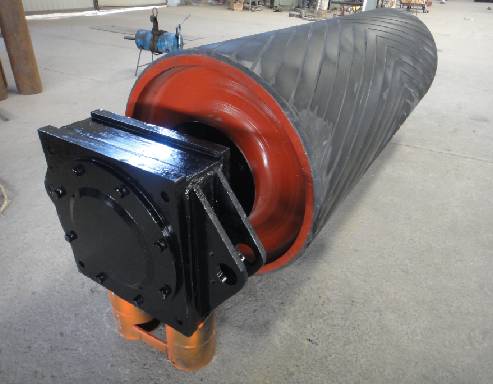 Afrikaans
Afrikaans  Albanian
Albanian  Amharic
Amharic  Arabic
Arabic  Armenian
Armenian  Azerbaijani
Azerbaijani  Basque
Basque  Belarusian
Belarusian  Bengali
Bengali  Bosnian
Bosnian  Bulgarian
Bulgarian  Catalan
Catalan  Cebuano
Cebuano  Corsican
Corsican  Croatian
Croatian  Czech
Czech  Danish
Danish  Dutch
Dutch  English
English  Esperanto
Esperanto  Estonian
Estonian  Finnish
Finnish  French
French  Frisian
Frisian  Galician
Galician  Georgian
Georgian  German
German  Greek
Greek  Gujarati
Gujarati  Haitian Creole
Haitian Creole  hausa
hausa  hawaiian
hawaiian  Hebrew
Hebrew  Hindi
Hindi  Miao
Miao  Hungarian
Hungarian  Icelandic
Icelandic  igbo
igbo  Indonesian
Indonesian  irish
irish  Italian
Italian  Japanese
Japanese  Javanese
Javanese  Kannada
Kannada  kazakh
kazakh  Khmer
Khmer  Rwandese
Rwandese  Korean
Korean  Kurdish
Kurdish  Kyrgyz
Kyrgyz  Lao
Lao  Latin
Latin  Latvian
Latvian  Lithuanian
Lithuanian  Luxembourgish
Luxembourgish  Macedonian
Macedonian  Malgashi
Malgashi  Malay
Malay  Malayalam
Malayalam  Maltese
Maltese  Maori
Maori  Marathi
Marathi  Mongolian
Mongolian  Myanmar
Myanmar  Nepali
Nepali  Norwegian
Norwegian  Norwegian
Norwegian  Occitan
Occitan  Pashto
Pashto  Persian
Persian  Polish
Polish  Portuguese
Portuguese  Punjabi
Punjabi  Romanian
Romanian  Russian
Russian  Samoan
Samoan  Scottish Gaelic
Scottish Gaelic  Serbian
Serbian  Sesotho
Sesotho  Shona
Shona  Sindhi
Sindhi  Sinhala
Sinhala  Slovak
Slovak  Slovenian
Slovenian  Somali
Somali  Spanish
Spanish  Sundanese
Sundanese  Swahili
Swahili  Swedish
Swedish  Tagalog
Tagalog  Tajik
Tajik  Tamil
Tamil  Tatar
Tatar  Telugu
Telugu  Thai
Thai  Turkish
Turkish  Turkmen
Turkmen  Ukrainian
Ukrainian  Urdu
Urdu  Uighur
Uighur  Uzbek
Uzbek  Vietnamese
Vietnamese  Welsh
Welsh  Bantu
Bantu  Yiddish
Yiddish  Yoruba
Yoruba  Zulu
Zulu Exploring Various Types of Belt Cleaning Solutions for Optimal Conveyor Performance and Maintenance
Types of Belt Cleaners Ensuring Efficient Conveyor System Performance
Belt cleaners play a vital role in the operation of conveyor systems across various industries. These mechanical devices are designed to remove material that adheres to the surface of conveyor belts, ensuring the efficient transport of bulk materials. Proper belt cleaning is essential as it helps to maintain the integrity of the belt, reduce wear and tear, and improve overall system efficiency. There are several types of belt cleaners available, each designed to meet different operational needs.
1. Primary Belt Cleaners
Primary belt cleaners are installed at the discharge point of a conveyor system, where they effectively remove the bulk of the carryback material that can cling to the belt as it discharges its load. These cleaners are typically comprised of a blade or scraper that makes contact with the belt surface, dislodging material through mechanical action. Primary cleaners must be robust and adjustable to accommodate different belt sizes and material types. They often come in various designs mechanical scrapers, chisel-edge scrapers, and rotary brushes, each offering unique advantages depending on the application.
Secondary belt cleaners are positioned further down the conveyor system, usually after the primary cleaners. Their primary function is to catch any leftover carryback that might have escaped the first line of defense. Secondary cleaners employ finer blade designs that can tackle the remnants of materials that cling to the belt. They often feature adjustable tension systems to ensure optimal contact with the belt surface without causing damage. The choice between using a secondary cleaner or additional primary cleaning elements depends on factors such as the material being conveyed, the belt type, and specific operational conditions.
3. Pre-Cleaners
types of belt cleaners

Pre-cleaners are a type of belt cleaner designed to remove bulk material before it has a chance to adhere to the belt surface. These cleaners are typically installed before the primary cleaners and can be particularly effective in environments where a significant amount of material can fall or spill onto the belt. Pre-cleaners can utilize a variety of mechanisms, including high-pressure water jets and air jets, to minimize the friction and adhesion of materials to the belt.
4. Specialty Cleaners
In addition to the standard primary and secondary cleaners, there are specialty cleaners designed for specific material types or conditions. For instance, there are cleaners designed to handle sticky or modular materials, such as clay or certain types of gypsum. These specialty cleaners often feature unique blade designs or material compositions to enhance their effectiveness against challenging materials. Other specialized designs may include brush cleaners and combination systems that utilize both scraping and brushing methods for superior cleaning performance.
5. Cleaning Systems with Automated Features
Contemporary belt cleaning systems are increasingly equipped with automated features. These advanced systems can adjust the cleaning pressure based on real-time feedback from the belt operation, helping to improve overall efficiency and reduce maintenance. Automation can also include predictive maintenance alerts, indicating when cleaning components need replacing or adjustment based on operational conditions and wear patterns.
Conclusion
Selecting the right type of belt cleaner is crucial for any operation utilizing conveyor systems. Each type, from primary and secondary cleaners to pre-cleaners and specialty options, offers unique advantages that can enhance the efficiency and reliability of material handling operations. Understanding the specific needs of an application, such as the type of materials being conveyed and the environmental conditions, will aid in selecting the best belt cleaning solution. Investing in proper belt cleaners not only supports increased productivity but also prolongs the lifespan of conveyor equipment, ultimately contributing to cost savings and operational success.
-
Revolutionizing Conveyor Reliability with Advanced Rubber Lagging PulleysNewsJul.22,2025
-
Powering Precision and Durability with Expert Manufacturers of Conveyor ComponentsNewsJul.22,2025
-
Optimizing Conveyor Systems with Advanced Conveyor AccessoriesNewsJul.22,2025
-
Maximize Conveyor Efficiency with Quality Conveyor Idler PulleysNewsJul.22,2025
-
Future-Proof Your Conveyor System with High-Performance Polyurethane RollerNewsJul.22,2025
-
Driving Efficiency Forward with Quality Idlers and RollersNewsJul.22,2025





























